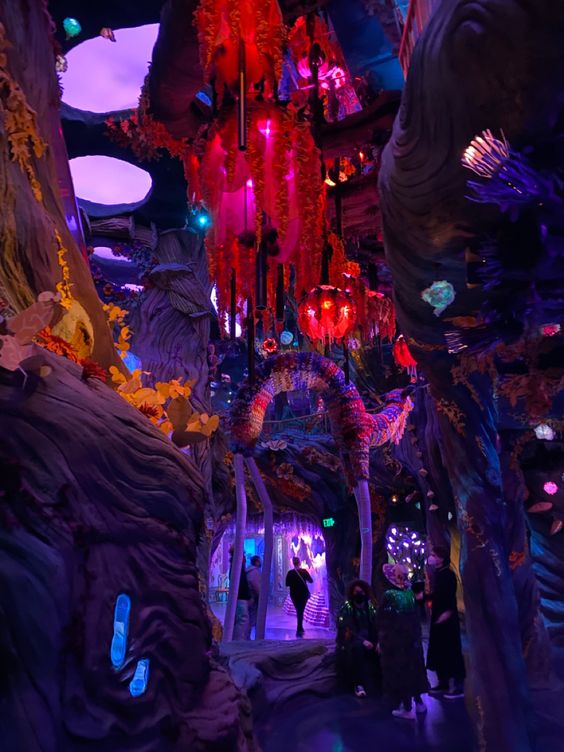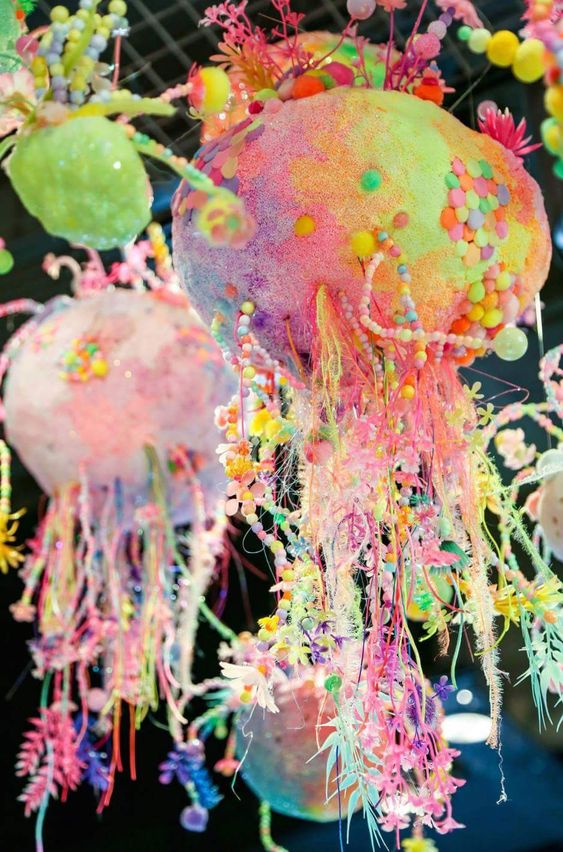A New World
Riddhi Mathuria + A great deal of help and inspiring feedback/suggestions from Shannon Scrofano
Project Description
Researching and exploring biomaterials and applying the findings to propose an immersive ‘New World’ exhibit - with installations, tactile components and props, informative panels etc (made from bio, waste & recycled materials).
Opening a door for more possibilities, potentials and opportunities for what more biomaterials can do and offer. Giving that experience of stepping into this new world, this beautiful ‘biosphere’ that the user/audience can touch, see, hear and feel.
Indulge all their senses. Indulge their minds. Spark conversations and cultivate curiosity about our oceans.
Core questions
What is the future of biomaterials?
How promising is it? What are the possibilities? The opportunities?
What would a world of biomaterials look like? How would humans/other living organisms react and engage with this world?
What if a mass transition to biobased products really allowed industry and society to not only restore, but, most importantly, preserve a new environmental balance that could meet the requirements of the future?
Context
Biomaterials are part of the green chemistry industry that represents a non-hazardous and resource-efficient alternative with enormous potential. Taking into account the various products and applications where innovation would allow us to rely on biomaterials instead of mineral or non-renewable alternatives, nature could supply up to 60% of our economic inputs.
Research into green chemistry has advanced rapidly with supportive regulation, public awareness and consumer demand in the past decade, driving progress in fields including: bio-based chemicals, renewable feedstocks, safer solvents and reagents, green polymers and the atom economy.
The market value of the global green chemistry industry was reported to be more than USD 11 billion in 2015, and grew to account for more than 14% of the overall chemicals market by 2019. The pandemic has not slowed it down: analysis shows that the green chemistry industry is likely to grow at a CAGR of 6.6%-11.5% from 2020-2025.
With increasing difficulties and instability in accessing traditional chemicals, bio-based alternatives can be also viewed as a step toward stabilising supply chains, production capacities and over the long term, potentially the risk of inflationary pressures, too.
There are more than 4,000 recognised types of enzymes, but it’s estimated that more than 25,000 exist in the natural world. With an estimated 90% yet to be classified, there is enormous scope for innovation and growth.
Within the biomaterials sector of the circular bio-economy exist companies developing or providing solutions aligned with the growth industries of bio-based chemicals and enzymes. We believe these represent strong growth opportunities aligned with the aim of preserving nature and harnessing its regenerative properties.
Info
If there was a way to see or experience how not only humans but also how different organisms would react, respond and interact with this new environment..how interesting would that be? The intent of this exhibit is the opposite of making people uncomfortable and guilty about climate change but rather giving them an exciting experience about touching, feeling & thinking about these materials, and letting them feel impassioned about all of the future possibilities of what these materials can do – through experiential learning and exploring.
How can this potentially work with the idea of Sea Studio?
This can be a space for artists to bring their interests and ideas, materials and agendas to collaborate on making this ‘new world’ or contribute in any ways they can towards building this space. Hopefully maybe even cultivate a joint network of artists all around - a system of connectivity? Sharing their ideas, practices and letting each other be in the know of what’s happening.
Riddhi Mathuria + A great deal of help and inspiring feedback/suggestions from Shannon Scrofano
Project Description
Researching and exploring biomaterials and applying the findings to propose an immersive ‘New World’ exhibit - with installations, tactile components and props, informative panels etc (made from bio, waste & recycled materials).
Opening a door for more possibilities, potentials and opportunities for what more biomaterials can do and offer. Giving that experience of stepping into this new world, this beautiful ‘biosphere’ that the user/audience can touch, see, hear and feel.
Indulge all their senses. Indulge their minds. Spark conversations and cultivate curiosity about our oceans.
Core questions
What is the future of biomaterials?
How promising is it? What are the possibilities? The opportunities?
What would a world of biomaterials look like? How would humans/other living organisms react and engage with this world?
What if a mass transition to biobased products really allowed industry and society to not only restore, but, most importantly, preserve a new environmental balance that could meet the requirements of the future?
Context
Biomaterials are part of the green chemistry industry that represents a non-hazardous and resource-efficient alternative with enormous potential. Taking into account the various products and applications where innovation would allow us to rely on biomaterials instead of mineral or non-renewable alternatives, nature could supply up to 60% of our economic inputs.
Research into green chemistry has advanced rapidly with supportive regulation, public awareness and consumer demand in the past decade, driving progress in fields including: bio-based chemicals, renewable feedstocks, safer solvents and reagents, green polymers and the atom economy.
The market value of the global green chemistry industry was reported to be more than USD 11 billion in 2015, and grew to account for more than 14% of the overall chemicals market by 2019. The pandemic has not slowed it down: analysis shows that the green chemistry industry is likely to grow at a CAGR of 6.6%-11.5% from 2020-2025.
With increasing difficulties and instability in accessing traditional chemicals, bio-based alternatives can be also viewed as a step toward stabilising supply chains, production capacities and over the long term, potentially the risk of inflationary pressures, too.
There are more than 4,000 recognised types of enzymes, but it’s estimated that more than 25,000 exist in the natural world. With an estimated 90% yet to be classified, there is enormous scope for innovation and growth.
Within the biomaterials sector of the circular bio-economy exist companies developing or providing solutions aligned with the growth industries of bio-based chemicals and enzymes. We believe these represent strong growth opportunities aligned with the aim of preserving nature and harnessing its regenerative properties.
Info
If there was a way to see or experience how not only humans but also how different organisms would react, respond and interact with this new environment..how interesting would that be? The intent of this exhibit is the opposite of making people uncomfortable and guilty about climate change but rather giving them an exciting experience about touching, feeling & thinking about these materials, and letting them feel impassioned about all of the future possibilities of what these materials can do – through experiential learning and exploring.
How can this potentially work with the idea of Sea Studio?
This can be a space for artists to bring their interests and ideas, materials and agendas to collaborate on making this ‘new world’ or contribute in any ways they can towards building this space. Hopefully maybe even cultivate a joint network of artists all around - a system of connectivity? Sharing their ideas, practices and letting each other be in the know of what’s happening.





